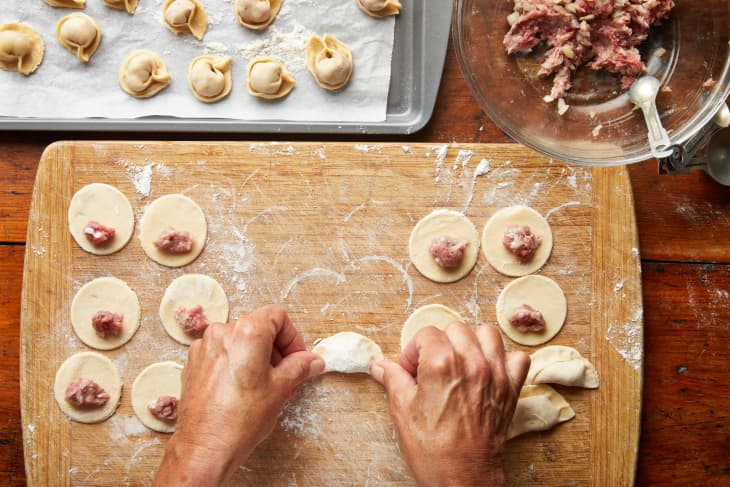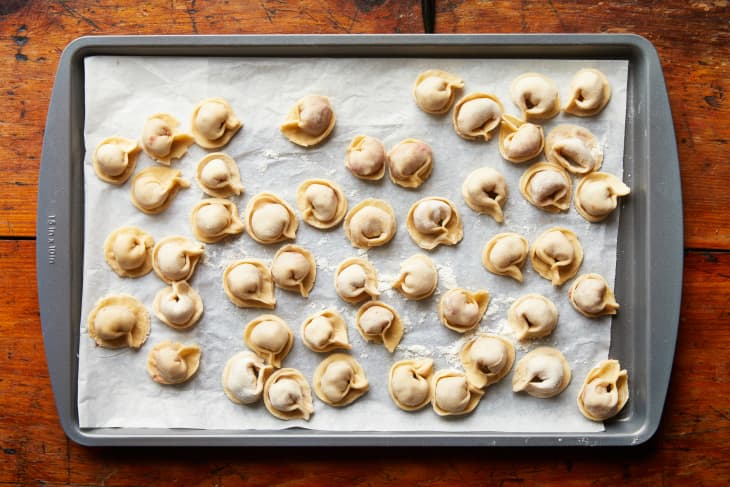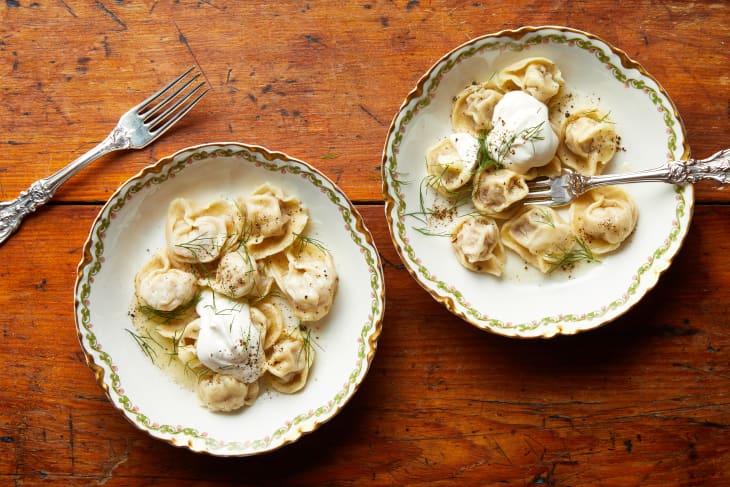e all connect over our shared love of boiled dough stuffed with a filling of sorts, which is what makes dumplings so universal. And while there are many types of dumplings native to different parts of the former Soviet Union, Siberia’s claim to fame is the Siberian pelmeni.
Pelmeni are tiny round dumplings stuffed with a blend of pork and beef. They’re either consumed with a generous chunk of butter and a dollop of sour cream, or — and this is my family’s favorite — in their own richly flavored cooking broth with plenty of black pepper. No matter how you serve them, they’re always made in big batches, and when cooked from frozen they’re ready in just 10 minutes.
Here, I’ll show you how to make the dough and filling, form them into dumplings, then cook them from fresh or frozen for instant bowls of comfort.

Pelmeni’s popularity and longevity can easily be explained by how fitting they are for the cold climate. Believed to have come to Siberia from China by way of Mongolian settlers many, many centuries ago, they’ve since become a staple of Siberian and Russian cuisine due to their long-lasting quality.
For those living in villages, pelmeni became a means of preserving meat during the cold months. Made in bulk, they hold up well in freezing temperatures by simply being kept outside. But they found equal popularity with the town and city folk, as even in the absence of a freezer, the dumplings can be kept on a balcony, or even hung outside the window in a tote bag. It really is an iconic image of the Soviet era: a large bag of pelmeni dumplings suspended in an avoska, or string bag. To this day, pelmeni are still kept on the balcony if the household doesn’t have a freezer of if the freezer is not large enough.

While the pelmeni filling can vary — lamb, chicken, fish, and mushrooms are all good alternatives — the one thing that always remains constant is the quantity. Pelmeni are made in huge batches, and the quantity itself is part of the pelmeni ritual.
Before they were widely available for purchase, families would come together for pelmeni-making parties, gathering around the kitchen table with some grinding the meat, others making the dough, and the most dexterous and patient ones shaping the dumplings. Singing and vodka-drinking were often an important part of the ritual. And as a practical joke (and a sign of good fortune), a clove of garlic or, worse, a coin, would be hidden in one of the dumplings. I wouldn’t recommend introducing that peculiar Russian custom, though! Pelmeni tend to dry out quite quickly, so they would always be kept under a kitchen towel, and as soon as they lost their stickiness would be packed into bags and sent off to the freezer, the balcony, or indeed the avoska bag to hang out of the window.
These days, many families own a special pelmeni mold, or simply buy them in bulk from a local granny at the farmers market or from the supermarket, which stocks dozens of different brands. Although they’re eaten primarily in winter, pelmeni make the most comforting, nourishing meal all year round. And if you’ve lovingly made them yourself, they always bring back the memories of the wonderfully meditative experience of doing so. Here, I’m sharing my favorite from-scratch recipe, which I’ve scaled down just a bit in case you don’t have a party full of hands to help you.

If you’re planning to freeze your pelmeni for a future date, set them on a sheet tray in the freezer until they’re frozen solid, then transfer them to zip-top bags. They will keep in the freezer for up to three months. The only difference when it comes time to make them is that you’ll need to tack on an additional minute to the cook time.
Serving and Eating Pelmeni
Every family makes and serves their pelmeni differently. My dad would often have his (as well as pretty much anything else) with soy sauce, which his mother would send us from their hometown of Khabarovsk before it became widely available in the shops all over Russia. As pelmeni were usually eaten in winter and no fresh herbs were around, adding fresh dill was not a common practice, but I would highly recommend this to you today as well as experimenting with other non-Russian herbs. Why not try pelmeni in sage butter?
When you’re ready to eat them, the real question, aside from which filling to go for, is how many you’ll eat. Some pelmeni lovers can consume as many as 30 to 40 dumplings at a time. Are you up for the challenge?
Source: https://www.thekitchn.com/






